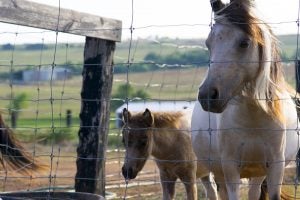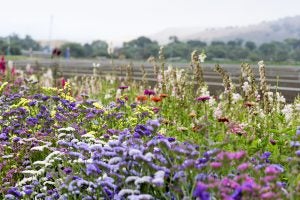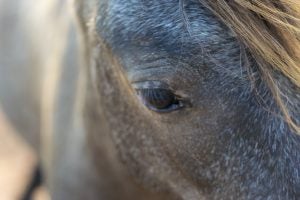I can’t think of any other place that makes me as happy than standing in the middle of a field ready to be harvested. In my corner of ag, I’m in the produce fields where the weather is perfect and your nose is greeted with the crisp, refreshing smell of lettuce being harvested. I’ve even perfected my romaine shuffle; the fluid movement of your legs between heads of lettuce before you find a solid piece of soil for your foot to land.
When our team goes and visits a field, everyone puts on the customary hair net and nitrile gloves, but I am the one trailing behind, rapidly clicking the shutter, usually with an extra lens and a tripod in tow (usually carried by the helpful coworker). I found out pretty quickly that you have to come prepared, wear jeans and a good pair of boots, and be quick on your feet. This isn’t your typical photo shoot, and the luxuries of a studio are no where to be found!

Here are a few photography tips if you’re ever out in in a field doing the romaine shuffle with $3,000 of camera gear strapped to your body. These are a few things I’ve found that comes in handy for this type of fast-paced photography and are things that may help you as you are taking pictures of your fields as well.
1. Think Cross Body
At first I didn’t love it, but if you give it the time and adjustment needed, a side mount camera strap will be your best friend. Mine has a zippered pocket to carry small items like extra SD cards. Usually I cross it across the front where the camera sits at my left hip. When you walk you can stabilize the camera from bouncing around with your left hand. Also on my strap I keep a lens cap holder. My habit is to stash it in the back pocket of my jeans, but this keeps that pocket free and that lens cap is not going anywhere once it is locked into the clip.
When I’m out in a field, I only carry what is needed. The bag stays in the vehicle. I’ve found it a little bit tricky to carry an extra lens. Pockets aren’t big enough and I tend to spend time worrying about hanging onto the extra lens than getting the perfect shot. Remember, once you are out in the field, you have nowhere to sit things down. A simple crossover sling tote (nothing fancy, just an open bag) is easy way to stash that extra lens or anything else you need to carry with you, including your phone for times you may need to also take a few easy pics for Instagram or do a live stream. I have thought about getting a multi-pocket photographer vest, but for now a simple tote works! The sling crosses opposite and falls at the right hip. You may look like you’re wearing a bandolier, but this really helps manage your bulky items and allows you to move.
2. Think about Your Lens
When shooting fields, I love using an Nikon 85mm fixed lens (prime). It allows all the sunlight to come in and really gives that professional, stunning shot. With cameras, it is all comes down to your glass. The deal with prime lenses is that there is no zoom, so you move your body to adjust your shot. But out in a field, that really doesn’t matter since your view covers hundreds of acres. This is my go-to and is ideal for portraits as well.
The other lens I use is a Nikon 18 to 200mm zoom. When you get a DSLR, your first upgrade should be to a mid-level lens and pack the kit lens away (the one that came with your camera). I shoot a lot of video with this lens, and in the fields a good video tripod is a must. When buying your tripod, make sure it has stout legs and a fluid video head, you’ll notice they have a long arm that you will be really glad to have for panning shots.

3. Think Lighting
You and the sun will be partnering up on lighting for these field shots. Early morning shoots may end up a bit dull and gloomy, especially for Salinas fields as there is always a fog that shrouds the valley until the afternoon. Some of that can be adjusted in your edits (be sure you are shooting RAW). However, my favorite field shots are in Yuma with full sunshine. Having your lens hood on along with a lens filter will help knock down the intensity of the sunlight.
4. Think Composition
I’ve noticed the default is to take a shotgun approach to composition; get as much as you can in the frame. What you need to do is find something to center the picture around and place it in the right or left third of the shot, or square in the middle. Also, get close to an object and make sure it fills the picture. Unless you have a spectacular view that enhances the subject of your picture, put as much of your subject into the picture as you can. In the case of a field, get low to the ground, kneel, or do whatever contortions you can manage. You may look stupid and get a little dirty, but you are not the one in the picture. Trust me, it pays off.
Composition, in my opinion, is one area that separates normal from great and is the side of photography that is part instinctual but can be developed over time. It’s knowing what and when to take a picture, and that comes from being observant and in-tune to your surroundings. It can take tens of thousands of clicks of the shutter to develop your eye, so keep on shooting!

5. Think Fun
My theory is if you enjoy taking pics, it will show in the pictures you take. A lot is because you develop the skill for things that you love, and to be good at anything, it takes a lot of time and practice. For me it gives me an opportunity to step away from the buzz of what is going on and experience the beauty and energy of where I’m at, to observe the people I’m with and see their personality unrestricted, and then capture the moments that stand out to me. The kind smile, people talking and laughing with each other, the perfect head of romaine, and the sunlight illuminating a field. In the grand scheme of things, that is what photography is all about.



